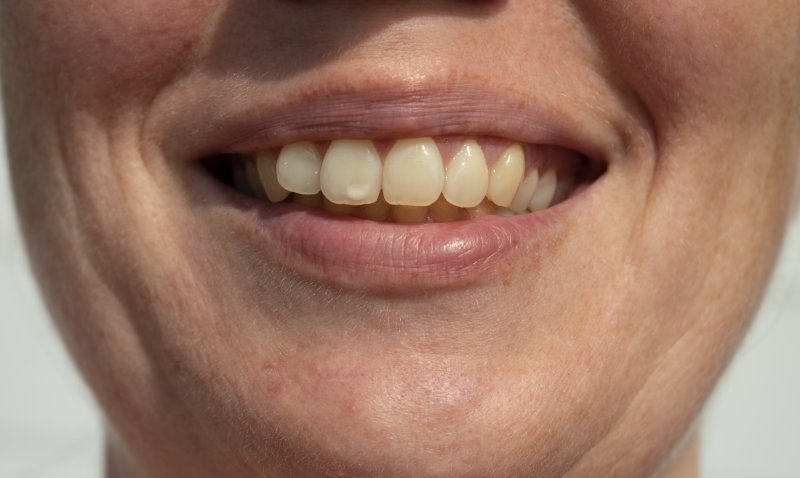3 Types of Tooth Staining and How to Get Rid of Them
July 30, 2024

Over time, teeth naturally become discolored. However, this remains one of the main reasons why people feel self-conscious about their teeth. Tooth stains occur for a variety of reasons, and they aren’t all equal, so they require different methods to mask them. Continue reading to learn about some of the different types of discoloration and some of the ways that you can reduce their appearance.
3 Types of Discoloration
There are three main categories when it comes to tooth discoloration:
- Extrinsic Staining: Extrinsic stains occur on the surface of the tooth, typically resulting from pigmented foods and beverages, as well as the use of tobacco products. If you enjoy coffee, tea, or red wine on a regular basis, this is the type of staining to be wary of. The good news is that this is the easiest type of discoloration to correct.
- Intrinsic Stains: This type of stain occurs below the surface of the tooth. They become apparent when stain-causing particles work through the exterior of the tooth and within the enamel. Excessive use of fluoride has also been associated with this type of staining.
- Age-Related Stains: This is a combination of both intrinsic and extrinsic stains as described above. Because the center of the tooth, also called the “dentin,” is naturally yellow, this begins to show through the enamel as it grows thinner over time. The combination of this and extrinsic staining causes older adults to have discolored teeth.
How to Reduce Discoloration
If your teeth have become stained, there are multiple options available that can help. Professional teeth whitening is the first thing to consider. Store-bought teeth whitening options don’t usually provide significant results. By choosing a take-home teeth whitening kit from your dentist, you can achieve more dramatic results. This is because the whitening solution that you can get from your dentist is much stronger and more effective. This is especially helpful for those who have extrinsic staining.
If you have intrinsic or age-related staining, you may still achieve some results from professional teeth whitening. However, new restorations, like veneers and metal-free dental crowns, can likely give you the more dramatic results that you’re hoping for. For instance, by placing a veneer on a severely stained tooth, you can cover up discoloration, improving its appearance.
If you are concerned about the color of your teeth, talk to your dentist. Together, you can assemble a plan to help you achieve your smile goals!
About the Author
Dr. Dominic G. Carlson is an experienced dentist serving the Bakersfield community. After completing his undergraduate degree at the University of Nevada, he earned his dental doctorate from Creighton University. He has undergone training in oral sedation and is currently taking a dedicated, 300+ hour course on dental implants to expand his clinical skill set. To learn more about teeth whitening and other cosmetic solutions or to schedule a consultation, visit his website or call (661) 327-7301.
